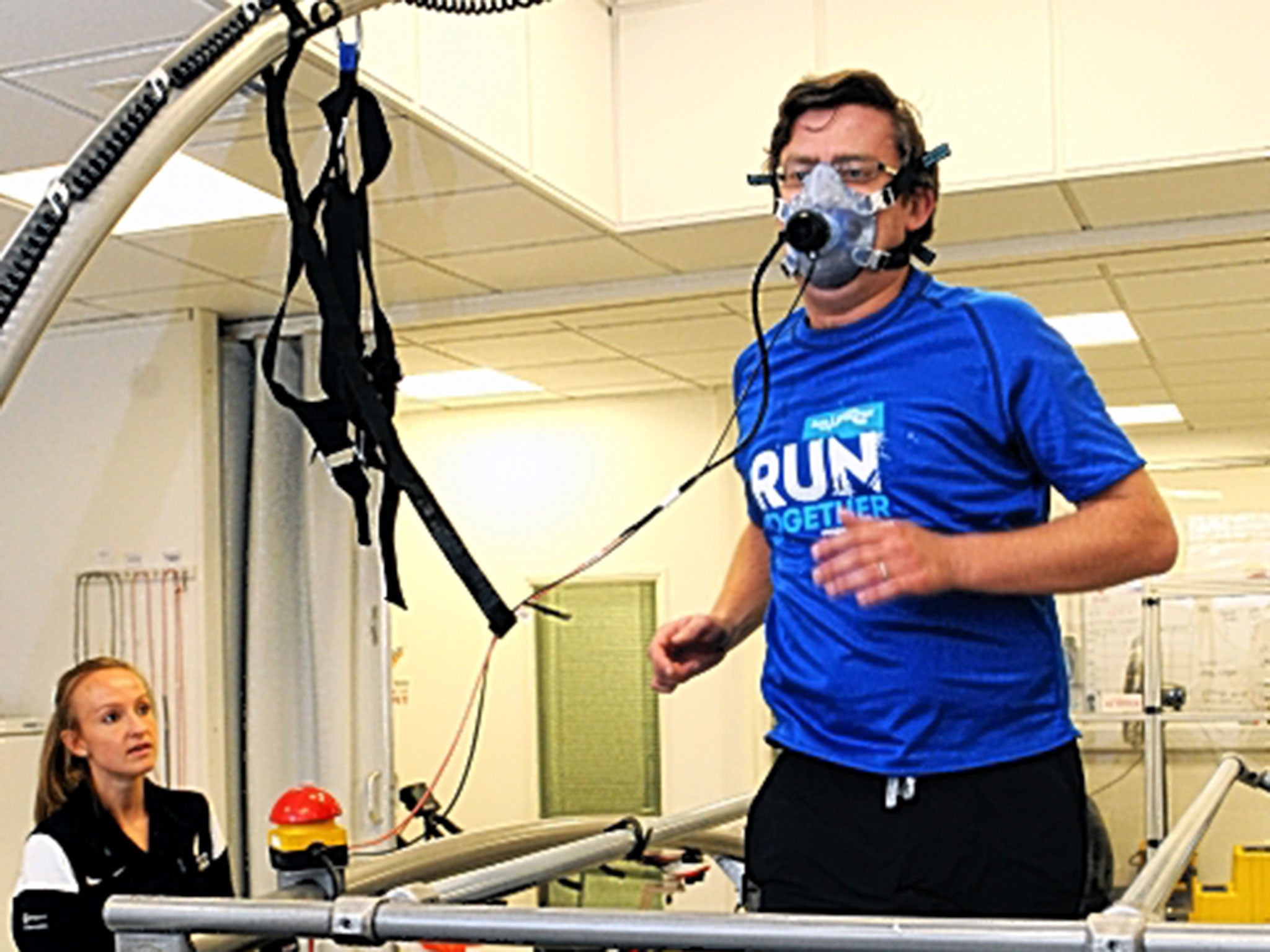Altitude training: Out of place - and breath - at Home of Champions
The Independent's athletics correspondent Matt Majendie is put through his paces at the English Institute of Sport

From an English Institute of Sport laboratory to running breathless in the foothills of the Rift Valley, it is abundantly clear my Olympic aspirations will go no further than writing about it on my laptop.
Does altitude training work? From my primitive tests at home on returning from Iten, in Kenya, it does. Even in the considerably colder climes, running seems easier at least for a week or two.
Starting in a Loughborough lab on a winter’s morning, it has been a brief journey devoid of much athletic ability, emulating what every leading middle- to long-distance British athlete goes through.
My V02 max (basically your maximum aerobic capacity), is 53. The Olympic hopefuls on the camp registered between 70 and 85.
To gauge my training level for Kenya, my submaximal lactate profile is correlated over six short three-minute runs from nine kilometres an hour up to 13 to see where lactate threshold and turn point speeds lie corresponding to heart rate.
This sets the boundaries for the three main levels of running up at 8,000 feet: easy, steady and tempo.
My lactate threshold, tested with blood samples from my ear lobe every three minutes, is at 11km/h while my heart rate is 166 beats per minute. My turning point is 13km/h with the heart rate up to 177bpm.
What that means in layman’s terms is that my easy running at sea level is sub 11km/h, my steady running at 11-13km/h and my tempo running anything above that.
At altitude, the numbers are skewed and the oxygen thinned, so the body has to work harder. The only true judge of where you are is your heart-rate monitor.
At 8,000 feet, even going up a flight of stairs a little quickly can leave you utterly breathless. Proper training, therefore, can be arduous.
Day one is a bike ride followed by what is labelled an “easy” run – it is anything but – to the 200m dirt track where David Rudisha shaped his world-record pace for London 2012.
Day two is a 15-minute circuits session with two-time world indoors bronze medallist Andrew Osagie, which leaves you gasping for air skipping from shuttle runs to floor exercises.
It is all rounded off by a run through Iten where even the slightest cough or mistimed breath can leave you bereft of oxygen.
All round, it’s an interesting exercise but a sorry sight for locals bemused by the laboured efforts at what is meant to be the “Home of Champions”. I feel out of place.
Subscribe to Independent Premium to bookmark this article
Want to bookmark your favourite articles and stories to read or reference later? Start your Independent Premium subscription today.

Join our commenting forum
Join thought-provoking conversations, follow other Independent readers and see their replies